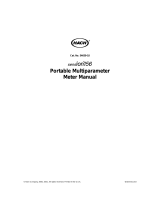
reading is not within 0.1 MPa, a change in calibration may have occurred, or the
sensor chamber may be contaminated. For cleaning instructions, see chapter 10
of the WP4C user’s manual. After cleaning, repeat the calibration check.
6. Taking a reading:
- Prepare the sample, and place the sample in a disposable sample cup,
completely covering the bottom of the cup, if possible.
- Turn the sample drawer knob to the OPEN/LOAD position, and pull the
drawer open.
- Place the prepared sample in the drawer. Check the top lip of the cup to
make sure it is free from sample residue. Remember: an overfilled sample
cup may contaminate the chamber’s sensors.
- Carefully slide the drawer closed, being especially careful if using a liquid
sample that may splash or spill and contaminate the chamber. Note: To
access the sample temperature menu, press the lower right-hand button.
When the Ts and Tb are in the 0 to –0.5 range, the temperatures are close
enough that the read time should not be long.
- Turn the sample drawer knob to the READ position to seal the sample cup
with the chamber. This begins the read cycle. In about 40 seconds, the WP4C
will display the first measurement. The WP4C will signal when the
measurement is complete, and the final water potential and temperature
will be displayed on the screen. Note: Never leave samples inside the
chamber for extended periods of time, as this can contribute to
contamination of the chamber.
METER strongly recommends careful packaging of the WP4C during travel to the
field. The WP4C case helps keep the WP4C safe during transportation and storage of
the instrument in the field. For help finding the appropriate type of power inverter,
please contact a local sales representative or METER for assistance.



